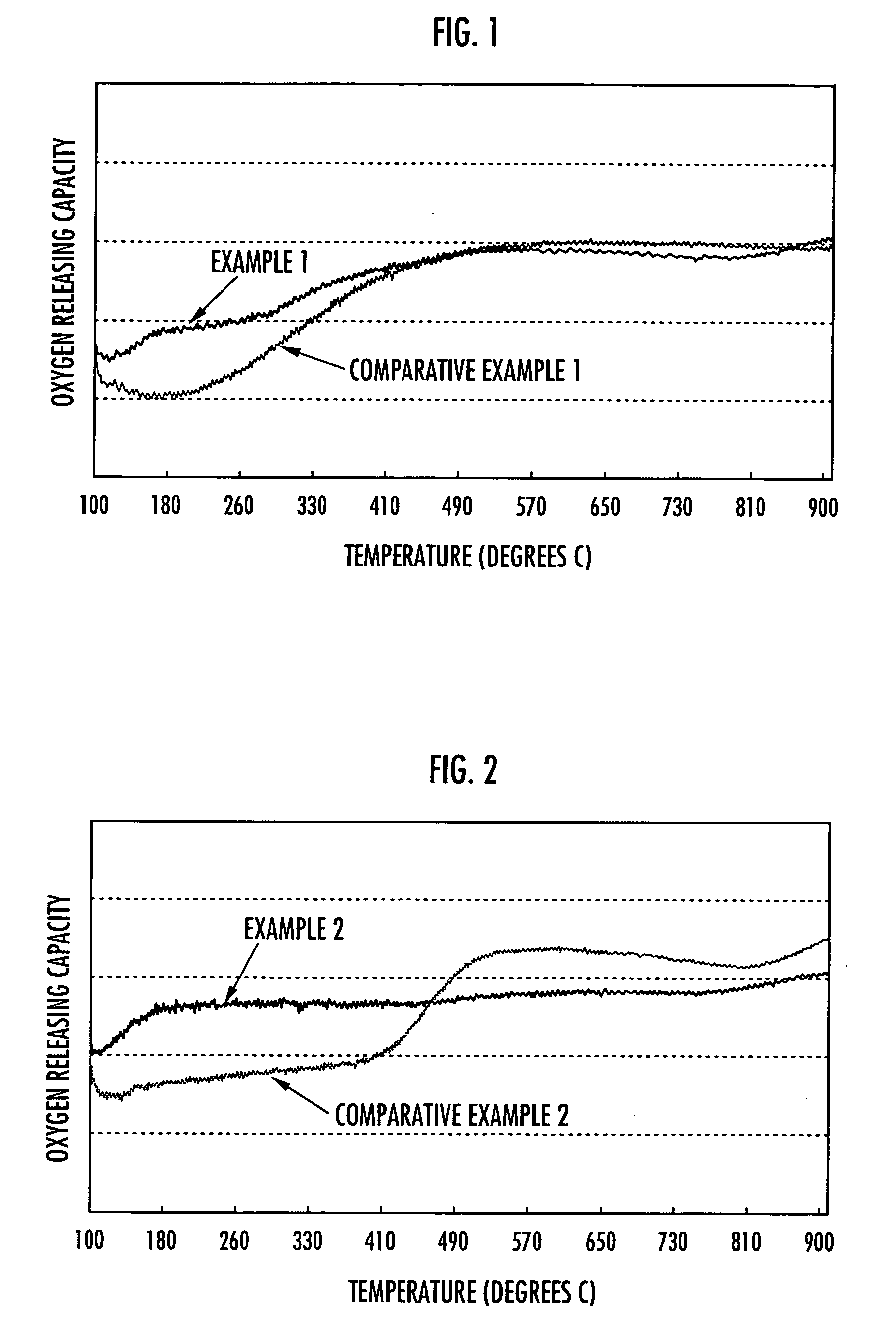Apparatus for removing particulate matter
a technology of particulate matter and apparatus, which is applied in the direction of physical/chemical process catalysts, metal/metal-oxide/metal-hydroxide catalysts, and separation processes, etc., can solve the problems of mounting a large apparatus onto a movable body, providing sufficient effect to reduce burning temperature, etc., and achieve and excellent oxygen releasing capacity
- Summary
- Abstract
- Description
- Claims
- Application Information
AI Technical Summary
Benefits of technology
Problems solved by technology
Method used
Image
Examples
example 1
[0028] First, in this example, equimolar quantities of lanthanum nitrate and manganese (III) nitrate, and four-fold molar excess of urea of a metal salt were dissolved in a small amount of water, and the solution was poured into a porcelain pot for a primary firing for two hours at 350° C. and further a secondary firing for one hour at 1000° C., which resulted in a perovskite-type complex oxide represented by LaMn(III)O3. Next, the temperature of the resulting perovskite-type complex oxide of this example was raised from an ambient temperature to 900° C. at the rate of 10° C. / minute in a vacuum of 1.33×10−5 Pa, and oxygen releasing capacity of the oxide was measured. The oxygen releasing capacity was determined, by measuring the oxygen which was desorbed during the above raise of temperature as a mass spectrum intensity of a mass-to-charge ratio (m / z)=32 with a mass analyzer. The result is shown in FIG. 1.
example 2
[0030] First, in this example, equimolar quantities of lanthanum nitrate, manganese (III) nitrate and strontium nitrate, and four-fold molar excess of urea of a metal salt were dissolved in a small amount of water, and the solution was poured into a porcelain pot for a primary firing for two hours at 350° C. and further a secondary firing for one hour at 1000° C., which resulted in a perovskite-type complex oxide represented by LaSrMn(II)O3. Next, the oxygen releasing capacity of the resulting perovskite-type complex oxide in this example was measured in the same manner as in Example 1. The result is shown in FIG. 2.
example 3
[0032] First, in this example, equimolar quantities of lanthanum nitrate and cobalt (III) nitrate, and four-fold molar excess of urea of a metal salt were dissolved in a small amount of water, and the solution was poured into a porcelain pot for a primary firing for two hours at 350° C. and further a secondary firing for one hour at 1000° C., which resulted in a perovskite-type complex oxide represented by LaCo(III)O3. Next, the oxygen releasing capacity of the resulting perovskite-type complex oxide in this example was measured in the same manner as in Example 1. The result is shown in FIG. 3.
PUM
| Property | Measurement | Unit |
|---|---|---|
| Temperature | aaaaa | aaaaa |
| Valence | aaaaa | aaaaa |
Abstract
Description
Claims
Application Information
 Login to View More
Login to View More - R&D
- Intellectual Property
- Life Sciences
- Materials
- Tech Scout
- Unparalleled Data Quality
- Higher Quality Content
- 60% Fewer Hallucinations
Browse by: Latest US Patents, China's latest patents, Technical Efficacy Thesaurus, Application Domain, Technology Topic, Popular Technical Reports.
© 2025 PatSnap. All rights reserved.Legal|Privacy policy|Modern Slavery Act Transparency Statement|Sitemap|About US| Contact US: help@patsnap.com



